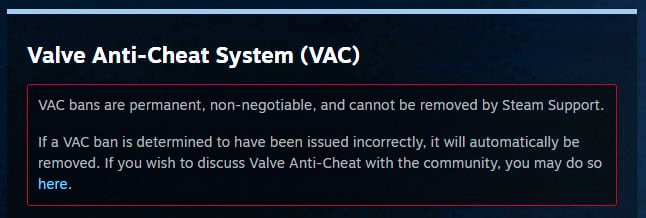
Online gaming has evolved into one of the most popular and lucrative forms of entertainment in the world. With millions of players across various genres, including battle royales, first-person shooters, and MMORPGs, the rise of multiplayer gaming has created a competitive environment where fair play is crucial. However, this success has come with its own set of challenges, particularly in the form of cheating. As the online gaming community grew, so did the sophistication of cheaters, who sought ways to exploit flaws in the system. This gave rise to the development of anti-cheat systems, which have become a critical component of maintaining fair competition and a balanced playing environment.
In this article, we will explore the evolution of anti-cheat systems in online gaming, from their early days to the advanced technologies used today, and the ongoing challenges in combating cheaters.
In the early years of online gaming, particularly during the late 1990s and early 2000s, cheating was often as simple as modifying game files or using basic programs that altered game behavior. Games like Quake and Unreal Tournament were among the first to introduce multiplayer modes, but they didn’t initially have effective anti-cheat measures in place. Players would often use tools to modify game parameters, such as increased health, faster movement, or enhanced accuracy. While these cheats were rudimentary, they laid the groundwork for more advanced cheating techniques to come.

One of the first major anti-cheat systems to gain widespread use was PunkBuster, introduced in 2000 by Even Balance. PunkBuster became one of the most prominent anti-cheat solutions, particularly in first-person shooters like Battlefield and Call of Duty. PunkBuster operated by scanning players’ systems for known cheat programs, preventing them from running during gameplay. This method was effective in identifying and blocking cheats like aimbots, wallhacks, and speed hacks.
However, PunkBuster wasn’t foolproof. While it could catch many common cheats, it wasn’t always able to detect the newer, more sophisticated hacks that cheaters would create. Despite its limitations, PunkBuster’s impact on the gaming community was significant, and it marked a major step forward in anti-cheat development.
By the mid-2000s, the online gaming scene had grown substantially, and so had the variety of cheats. Aimbots (which automatically aim and shoot for players) and wallhacks (which allow players to see through walls) became prevalent in competitive gaming. As the gaming community sought ways to combat these cheats, developers began to implement more advanced solutions.
In the battle against cheats, developers faced a difficult choice: whether to rely on client-side detection (where the game itself checks for cheats on the player’s computer) or server-side detection (where the game’s servers monitor for suspicious behavior). While client-side detection offered faster response times and easier implementation, it also had the disadvantage of being easier to bypass, as cheaters could simply disable or modify the detection system on their end. Read about 5 risks of using Aimbot in competitive shooters in our article.
Server-side detection, on the other hand, was more secure but required more resources to monitor player behavior and detect anomalies. As technology improved, many developers began to incorporate both methods. This dual approach allowed anti-cheat systems to use server-side monitoring to detect unusual patterns of behavior while also relying on client-side checks to identify known cheats.

In 2004, Valve introduced Valve Anti-Cheat (VAC) as part of their Steam platform. VAC was designed to detect cheats in games that were part of the Steam ecosystem. VAC primarily focused on detecting cheats related to aimbots, wallhacks, and other client-side modifications. Unlike PunkBuster, VAC used a more sophisticated algorithm that continually updated to catch new cheats.
VAC also introduced an important feature: the ability to issue permanent bans to cheaters. Once a player was caught cheating, they would be banned from playing any VAC-secured games, not just the one in which they had been caught cheating. This increased the deterrent for cheaters, as they could no longer simply switch to a different game or account. VAC’s integration with Steam allowed for easier reporting and banning, which helped reduce cheating in the platform’s extensive library of multiplayer games.
Despite these improvements, VAC was not without its own limitations. Players could sometimes bypass the system with custom-made cheats or use VPNs to mask their identity. Moreover, VAC’s detection wasn’t always immediate, leading to a delay between when cheats were used and when cheaters were banned. This prompted developers to continue seeking ways to improve anti-cheat measures.
As cheating methods became more advanced, developers realized that traditional detection methods were no longer sufficient. In response, new techniques began to emerge, one of the most significant being the use of machine learning and behavioral analysis. Anti-cheat systems began to evolve beyond simple detection algorithms and started analyzing player behavior in real-time.
Machine learning allowed anti-cheat systems to identify patterns of play that were indicative of cheating, such as impossible accuracy, suspicious movement patterns, or inconsistent damage output. These systems could learn and adapt to new cheat techniques, making it harder for cheaters to bypass them. While machine learning is still in the early stages of use in gaming, it has shown great promise in improving anti-cheat detection.
For example, Riot Games implemented an advanced anti-cheat system called Vanguard for their popular game Valorant. Vanguard uses kernel-level access to scan for cheats and also includes machine learning algorithms to monitor player behavior. Vanguard’s deep integration with the game makes it difficult for cheaters to bypass, as it operates at a deeper level within the game’s system.
Another notable example is Fortnite, which employs a similar approach by using its own proprietary anti-cheat system called Easy Anti-Cheat (EAC). EAC uses a combination of server-side monitoring and client-side scans, alongside behavioral analysis, to detect and ban cheaters in real-time.
The evolution of anti-cheat systems in online gaming has been a long and ongoing journey. From simple file scans to advanced machine learning algorithms, anti-cheat technology has continually adapted to meet the challenges posed by cheaters. While no system is foolproof, the progress made in the fight against cheating has greatly improved the integrity of online gaming, allowing players to enjoy fair and competitive experiences. As technology continues to evolve, the battle between cheaters and developers will remain a key part of the online gaming landscape.
For more information on the evolution of anti-cheat systems, you can visit Wikipedia’s page on Anti-Cheat Systems.